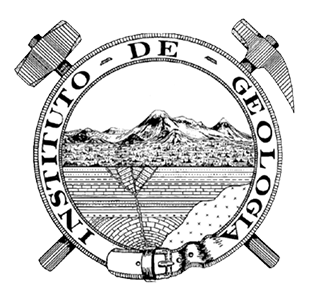Abstract
The objective of this investigation is to know the soil concentration levels of Radon gas (222Rn) in the urban area in the City of Morelia, Michoacán, México and its relationship with geological faults: potentially active faults and those associated with subsidence-creep-fault process. The average measurement of the Radon gas concentration of 86 stations distributed in the city of Morelia is 4,028.56 Bq/m3. In addition, a variographic analysis was carried out for 222Rn gas concentrations data to determine the possible existence of anisotropy. From this analysis it is inferred that the Radon gas in the city of Morelia presents a hybrid anisotropy, with preferential direction to the N50°E, which indicates that its spatial distribution is driven by the extensional stress field on the Morelia-Acambay fault system (s2=NE-SW y s3=NW-SE).
This work reports on the concentration levels of radon gas (222Rn) coming through the soil in the urban area of the city of Morelia, Michoacán, Mexico and its relationship with potentially active geological faults and with faults associated to subsidence-creep-fault processes. The average measurement of the radon gas concentration of 86 stations distributed in the city of Morelia is 4028.56 Bq/m3. In addition, a variographic analysis was carried out for 222Rn gas concentrations data to determine the possible existence of anisotropy. From this analysis it is inferred that the radon gas in the city of Morelia presents a hybrid anisotropy, with preferential direction N50°E, which suggests that the spatial distribution is driven by the extensional stress field on the Morelia-Acambay fault system (σ2=NE-SW y σ3=NW-SE). Using the natural neighbor interpolation method, a map of the radon gas concentrations in the urban area was constructed to visualize its distribution. In addition, by calculating the baseline-anomaly threshold, it was possible to identify the areas with anomalous concentrations. The results of this investigation indicate a relationship between high-risk radon zones and active faults. A clear example is La Paloma fault, where four of the seven stations located near this fault yielded measurements above the threshold. The results obtained in this investigation can be used as a basis for more detailed measurements in the urban area of Morelia City and to monitor the active faults. Also, they can be used as a guide to plan the growth and development of the city, allowing a safe location of future schools, health centers and factories, without leaving aside the normative aspect that could be derived from the results of this investigation.

This work is licensed under a Creative Commons Attribution 4.0 International License.
Copyright (c) 2020 Octavio Lázaro-Mancilla, Víctor Hugo Garduño-Monroy, Avith Mendoza-Ponce, Ángel Figueroa-Soto, Ricardo Vázquez-Rosas, Guadalupe Mirella Ramírez-Tapia, Alejandra Cortés-Silva












